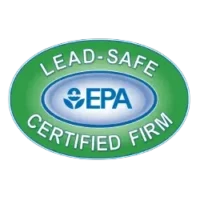Visual signs will often appear when it’s time to replace your house siding. Signs like fading, peeling, and mildew can warn you in advance of major repairs if you know what to look for. The key to successful home ownership is being proactive when repairs are needed instead of reactive.
Your house siding may need replacing if you spot certain visual signs like cracking, gaps, fading and peeling of the outer surface. These issues allow water to penetrate the siding and trap moisture, leading to rot, mildew, and mold.
A simple do-it-yourself inspection can reveal signs that it’s time to replace your house siding. Check for cracks, missing siding, or signs of pests. This will help you determine if your siding needs to be replaced soon.
It is important to replace house siding when signs show it has reached the end of its lifespan. This should be done before the siding fails and causes additional damage. When you should replace your siding depends on the siding’s condition, which we will help you determine.
Watch out for these five common signs that it’s time to replace your siding. Save time and money by recognizing subtle signs of siding damage before it gets worse.
5 Signs That It’s Time To Replace Your Home Siding
If your home’s curb appeal has seen better days, it’s time to replace your siding. Cracks, missing siding, and peeling indicate that your house siding needs immediate attention. These signs indicate that water damage will likely worsen unless these conditions are corrected.
Here are five signs that it’s time to replace your house siding:
Damage
Cracks
Cracks occur in siding that has lost its ability to repel moisture. Ultraviolet radiation from the sun deteriorates the siding’s surface and joints. This leads to cracks which let moisture penetrate the surface.
Cracks can expand as the material expands and contracts with the humidity and temperature of the ambient air. Typically, any siding materials other than vinyl siding will require painting, sealing, and caulking regularly to prevent cracks.
Gaps
Gaps between the siding panels indicate that it’s swelling with moisture. They are usually found on siding made from products other than vinyl, like hardboard, natural wood, and fiberboard.
This swelling is caused by failed caulk or paint, allowing the siding to become a sponge. Eventually, the moisture will promote mold and mildew, rotting the siding from the inside out.
Rot
Rot occurs when the siding becomes wet but cannot effectively dry out. Painted siding, for example, can allow water behind the siding through a minimal gap or crack in the paint.
Water can penetrate the surface of the siding. This water becomes trapped behind the paint. It is then absorbed by the siding, leading to swelling. The cycle begins again with the next rain event until the siding eventually disintegrates.
Fading
Faded siding is often the first sign that your house siding needs help. Fading is caused by ultraviolet radiation from sunlight. This often leads to fading appearing on the west and south sides of the house first.
Fading can occur from season to season, so regularly inspecting your siding is essential. Faded siding will appear dull and chalky to the touch. Fading occurs just before the failure of the siding, so address fading as soon as you identify it.
Peeling
Peeling siding indicates that the protective coating on the siding has detached from the surface. The most common occurrence of peeling is found on painted surfaces, but sealers and waterproofers can also peel. Peeling will leave the underlying surface unprotected, so the problem becomes worse over time.
Peeling occurs when the paint or sealer does not permanently bond with the surface of the siding as it dries. Known as a cold bond, the paint (or sealer) sits on top of the siding instead of bonding. Missing siding will allow water to contact the uncovered spot and any good siding beneath the opening.
Missing Siding
The easiest sign that it’s time to replace your house siding is when a section is missing. This situation is also the most serious, so immediate attention is required. Missing siding will allow water to contact the uncovered spot and any good siding beneath the opening.
If you have a significant section of siding that needs replacing, consider replacing the siding completely. Most professionals would agree that vinyl siding is the least expensive yet most durable siding material available.
Pests
Moisture absorbed by defective siding will attract insects and the pests that prey on them. Look for small holes, especially around joints where caulk appears damaged or missing. Insects often search for water. If you notice small holes in your siding, it likely means that the wall behind the siding is wet.
Pests attract rodents, birds, and small reptiles, which can cause further damage to the siding. Access the dark attic during the day to look for cracks and gaps around the second floor. Check for any light passing around the framing.
Moisture and Mold
Moisture causes mold and mildew, which can harm those sensitive to them. Identify mold and mildew by looking for vertical brown or green streaks. Moisture often accumulates on roofs. If it is unable to evaporate, mold and mildew will continue to grow.
Your Energy Bill Has Gone Up
All homes have a thermal envelope, which is the heated and cooled part of the house. The effectiveness of the thermal envelope will determine how much energy escapes the home, which directly affects the energy bill.
Siding needing replacement will have defects like cracks, spaces, and gaps that create drafts when the wind blows outdoors. These drafts suck the conditioned air from your house, so your HVAC system must work overtime to replace it.
How Long Does Siding Last?
With proper maintenance, siding should usually last between 10 and 20 years. Please note that proper maintenance is a requirement and will require resources in the future. The exception to this rule is vinyl siding, which requires no paint, caulk, or sealers to maintain.
The best time to replace siding is when it’s costing you more than it is saving you. For example, old, leaking siding costs you in repairs, water damage, and drafts that waste energy. In many situations, replacing the old siding with a low-maintenance material, like vinyl siding, is the least expensive option.
What Type of Siding Is Best?
Overall, vinyl siding will offer the best value, most options, and highest durability you can buy. Vinyl siding has evolved to provide many designs, styles, and colors to match virtually any decor. Because vinyl siding requires no special framing support, it is also a common substitute for stonework.
Total Home Construction Recommends Vinyl Siding
Helping you determine when it’s time to replace your siding is a free service offered by siding experts like those at Total Home Construction. We’re located on Long Island, N.Y., and serve Nassau, Suffolk, Queens, and Westchester counties.
Total Home Construction knows the New York climate and recommends only those siding brands that can handle rough New England weather, like Alside, Gentek, and Certainteed. For a free, no-obligation inspection of your house siding, just click here for an appointment.













